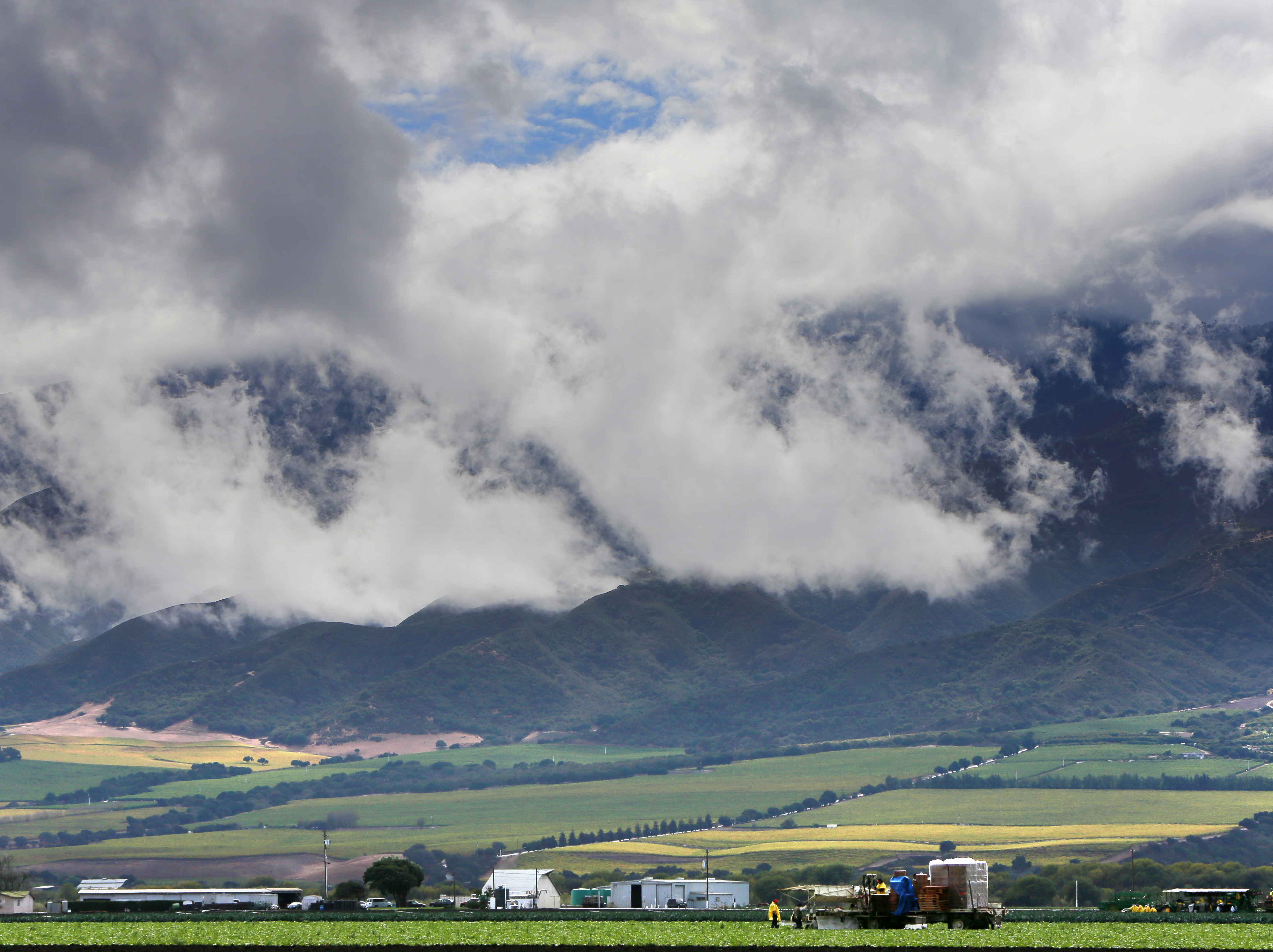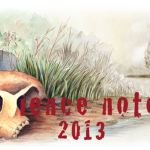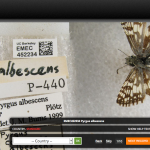The term “organic” has become loaded. Like “climate change” and “Petraeus”, it appears so often in the media that, at a glance, it floods readers’ minds with preconceived notions.
For me, “organic” says healthy families, smiling farmers, and sunny hills of colorful, sustainable food—a serious simplification. But, even having heard compelling arguments suggesting otherwise, that organic food is not as healthy and sustainable as we once thought, my positive associations with the term remain too strong to waver.
So how, as science writers, do we take a sensationalized topic like agriculture and help the public, and ourselves, see it with sober eyes?

Central California’s Salinas Valley: the Salad Bowl of the U.S., where 80 percent of U.S. lettuce is grown. New findings show that conventional growers could increase lettuce yields 10-fold if they adopted certain organic practices. PHOTO CREDIT: Travis Geske
We can start by delicately presenting the shortcomings of both food systems. Dr. Eric Brennan, a USDA horticulturalist in Salinas, California, explains this simply:
“You can have sustainable conventional farms, and you can have unsustainable organic farms,” he told me. “You can similarly have sustainable organic farms, and unsustainable conventional farms. You have to look at the system.”
Fair enough. This seems like a good place to start. For example, we can point out that synthetic fertilizers might pollute soils, but that “organic” manure fertilizer might not be much better for the environment if it comes from unsustainable animal operations. Or, that organic farming might be considered less sustainable than conventional if it produces less food per acre, but that some organic farms actually yield more food per acre than conventional systems, according to a May 2012 report in Nature.
Having established that both systems are flawed, we can move on to ask perhaps a more important question: Are there ways for farmers to borrow from both systems to become more profitable and sustainable in the future?
Brennan has been researching this question for the past decade. He has recently begun to publish a series of 20 papers that discuss a variety of improvements in organic techniques that conventional farmers could adopt without switching systems completely.
In a recent publication of his work in Agronomy Journal, he shows that winter cover cropping—covering a field with a non-cash crop in the winter rather than leaving it barren—increases lettuce yield 10-fold in central California’s Salinas Valley. Given that 80 percent of U.S. lettuce comes from the Salinas Valley, this could impact consumers nationwide.
Cover cropping stabilizes and fertilizes soil, decreasing the chemical inputs required during the growing season. Any number of crops with large root systems can qualify as a cover crop, including rye and mustard. By extending strong networks of roots, the crops prevent soil erosion, especially during winter floods. And, when the farmer mows them down in the spring, the crops decompose and add nutrients to the soil.
Cover cropping is not new. But Brennan’s long-term study offers a fresh, comprehensive look at how best to adapt this method to the specific growing conditions in the Salinas Valley. The efficient approach he recommends ultimately cuts back on synthetic fertilizer costs and reduces harmful fertilizer runoff.
Conventional farmers have traditionally shied away from this practice because it can delay spring planting, but Brennan’s work should help them integrate it more profitably. He points out that this is just one of many methods that conventional farmers could start to adopt to profitably become more sustainable.
By highlighting such stories of innovation and forward thinking, we can breathe new life into agriculture in the media. While we’re at it, we might give the word “organic” a break and create a new phrase to describe this hybridizing food system. For now, I’ve settled on “sustaina-culture”.







Comments are closed.